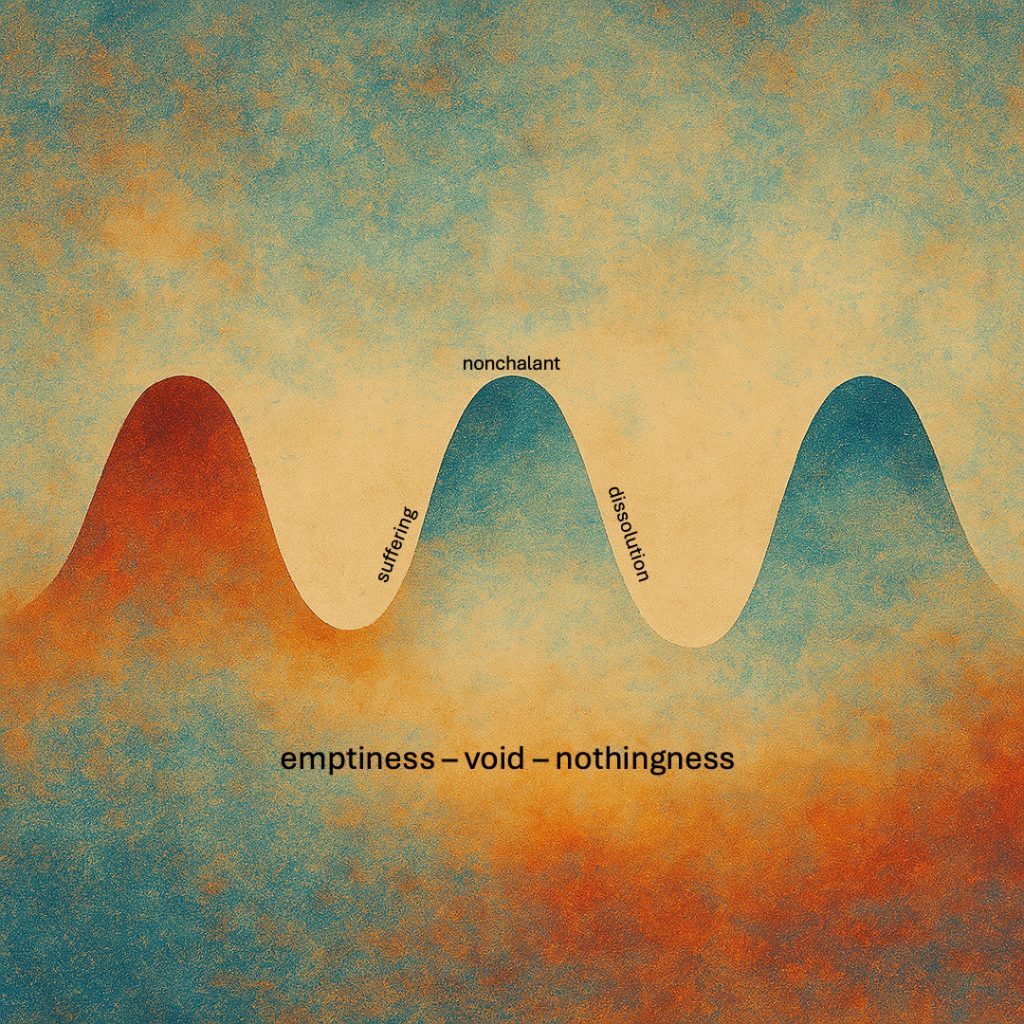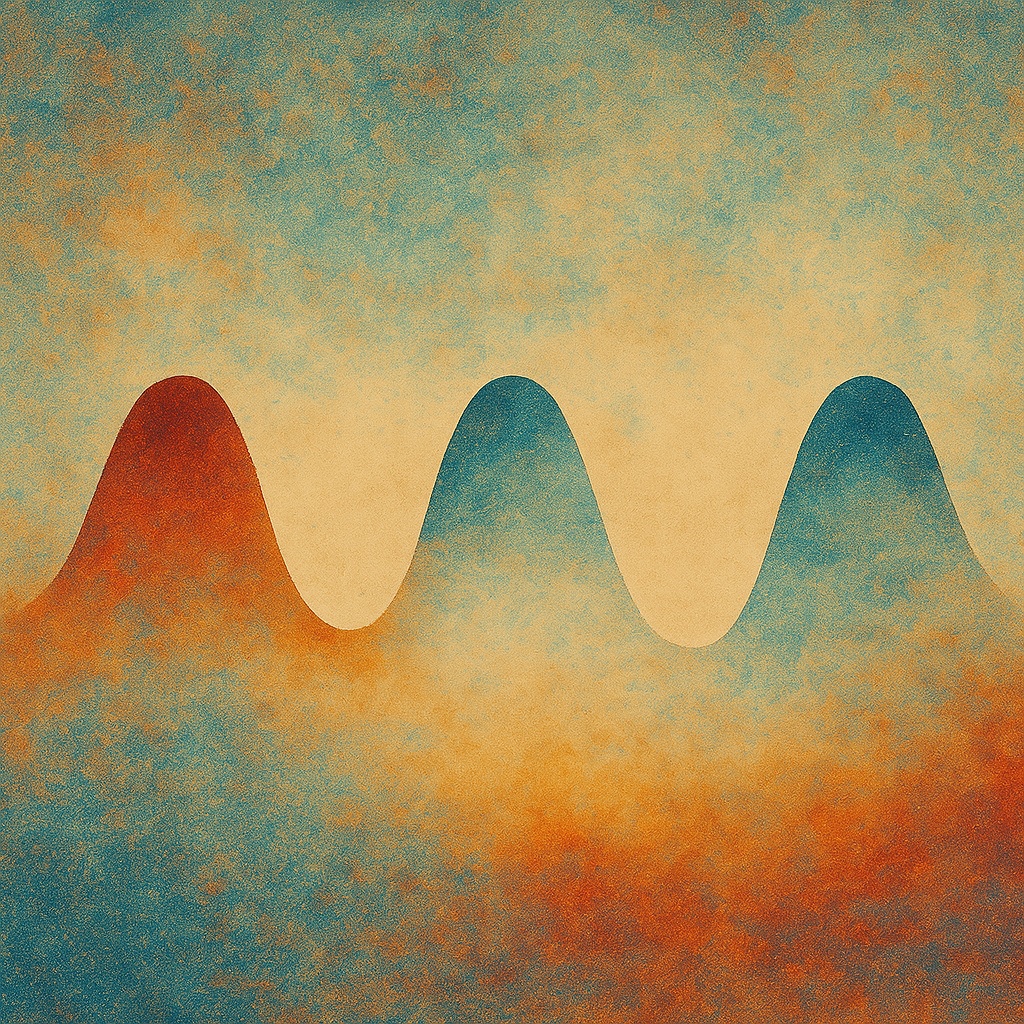The term māyā is often translated as “illusion”—a powerful force that makes the dualistic world appear real, even though only the non-dual Brahman truly exists.
However, I prefer to interpret māyā not as “illusion” but as “disappearance” or “vanishing” (in its street-Kannada sense). In truth, all of reality is constantly vanishing into a void. This concept might be overwhelming at first, so let’s break it down step by step.
Impermanence: A Gentle Observation
For millennia, Rishis have taught that all of reality is impermanent. By “reality,” they’re referring to the sensory world—the sights, sounds, smells, tastes, touches, and mental images that we experience. Predominantly, this is the one reality we all directly perceive. Everything else is inferred from that. It’s easy to observe this for ourselves. The world we construct through our senses—sight, sound, touch, taste, smell, mental images, and thoughts—constantly flickers. Nothing stays the same. There’s no fixed sight, sound, thought, or feeling. Everything is in motion, always changing, always pulsating.
In short, sensory reality is impermanent.
When we closely observe our experiences, we notice that things seem to arise and disappear. Each sensation—whether a sight, sound, or thought—feels like a wave: it begins, rises to a peak, and then fades away. If we look closely enough, we can even sense the space between two waves.

The Speed of Sensory Experience
In modern life, we’re conditioned to focus on the constant arising of sensations. We bounce from one to the next—one sight, then another sound, a taste here, a thought there. Our attention is always pulled from one sensation to the next, keeping us engaged (and often stressed). With a focus on the arising of sensations, they are bound to feel personal, as though they are happening to a “personal self” for a specific reason, or even feel like the sensation stream constitutes a “personal self”. This can cause stress, tension, and a constant sense of being worked up.
Shifting Focus: The Role of Practice
Practices like pranayama, prayer, meditation, and self-inquiry (atma-vichara) gently guide us to focus on the peak of each wave. When we rest there for a moment, we begin to realize that sensations arise on their own, without any personal involvement. They are not mine or about me—they simply happen due to causes and conditions. We are merely witnesses to them.
This shift in perspective leads to what is often called “witness-consciousness.” As we become more aware of the space between the sensations and the Self, we stop identifying with the sensation-stream. Instead, we identify with the silent observer who watches it all. This brings a sense of peace and calm. People in this phase appear relaxed and unbothered, though they may still get worked up at times. Overall, they seem more centered.
Moving Deeper: The Disappearance of Sensations
With consistent practice, attention naturally shifts from the peak of the wave to its trough. Here, we come face-to-face with the disappearance of sensations. As we spend more time in this space, the realization becomes undeniable: everything is vanishing. Everything we once believed to be real—including our sense of self—starts to reveal itself as unreal.
This is māyā. Experientially, the unreality of everything becomes clear. At this stage, it’s not unusual for one to feel sadness or fear, as so much of what we once thought was real is dissolving away. There’s a sense of profound loss—a loss of identity, of stability, of what we’ve held dear.
Where Do Things Go?
At this point, the question naturally arises: “Where does everything go when it vanishes?”
The answer becomes clear when the seeker shifts their attention to the space between two waves. Here, they come into contact with Śūnya—the void, emptiness, nothingness. It’s not something external they encounter. Instead, they realize that they are the void. They are the emptiness, the backdrop in which all of reality (including the experience of being a witness) arises and fades.
This backdrop is the non-dual Brahman—the ultimate reality.
The Final Step
Once a person touches this profound realization, the next step is to integrate and recreate reality from this place of awareness. After that, they begin to live and experience the world while simultaneously dwelling in the non-dual Brahman. Like everything else on the journey thus far, this also happens naturally.
